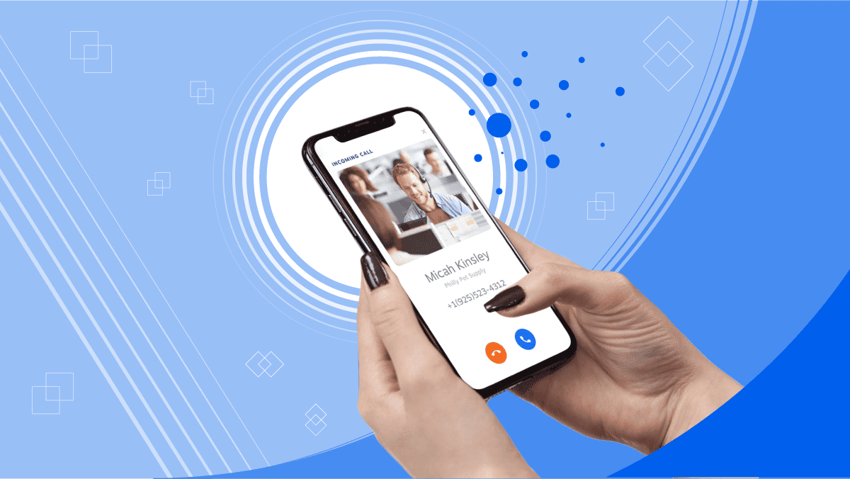A call center is only as effective as its technology. The days of simple dial and smile are over. Today’s agents are expected to manage complex customer data, omnichannel interactions, and compliance regulations simultaneously, while also resolving issues.
To meet these increased expectations, businesses need more than standalone telephone systems. Success today requires a tightly integrated software ecosystem with robust call center tools — from AI-powered analytics to predictive automation — that actively optimize processes for employees and customers.
Whether you’re building a new support team or upgrading your outdated phone system, the right tools will boost your employees’ productivity and enrich your customer experience. This guide covers the best call center software tools you’ll need to build an efficient and customer-centric operation in the new year.
Top 15 Call Center Tools for 2026
Here are the must-have tools and features to consider when searching for new call center software.
- Helpdesk software
- CRM software
- Desktop softphone and mobile app
- Interactive voice response
- Automatic call distribution
- Call scripting
- Call recording
- Call queue
- Predictive dialer
- Dashboards & call analytics
- Wallboards
- Customer satisfaction surveys
- Workforce management tools
- AI and automation
- Compliance and security tools
1) Helpdesk Software for Omnichannel Customer Support
Not every customer wants to call. With research showing that a majority of consumers use email, live chat, and social media for support, an omnichannel approach is essential. Helpdesk software is a central hub for these interactions, consolidating every message — regardless of its source — into a single, unified interface.
This unified inbox eliminates the need for agents to toggle between open tabs, saving time and reducing the risk of missed requests. More importantly, helpdesk tools use intelligent triage to automatically route tickets not just to any agent, but to the specific person with the highest success rate for that topic.
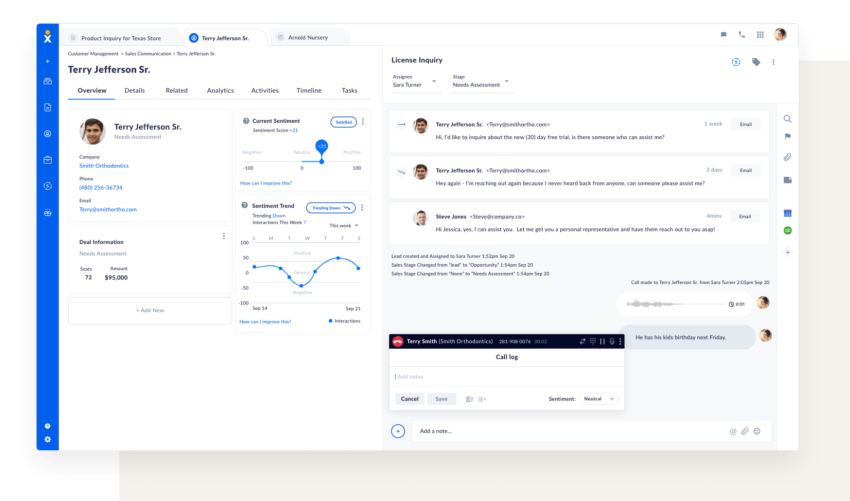
Key Providers: Zendesk, Freshdesk, Nextiva, HubSpot Service Hub
2) CRM Software for Integrated Customer Relationship Management
The lines between customer service and sales are blurring. Integrating your call center with a customer relationship management (CRM) platform is essential for a smooth customer journey. You get a 360-degree view of each customer and synchronize customer data across all touchpoints in real time.
When a call is received, features like Screen Pop instantly display the entire call history — previous purchases, previous support tickets, and recent survey responses. Agents can provide personalized service without customers having to repeat themselves. At the same time, businesses can proactively prevent customer churn, identify upselling opportunities, and increase customer loyalty and customer lifetime value.
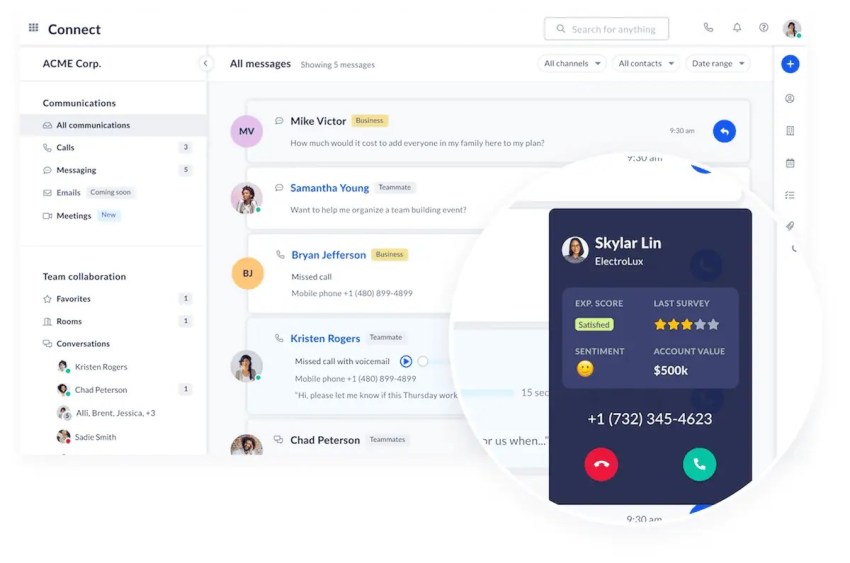
Key Providers: Nextiva (with built-in CRM), Salesforce Service Cloud, HubSpot, Microsoft Dynamics 365
3) Desktop Softphone and Mobile App for Cloud-Based Communication
Cloud contact center enables better remote work. Instead of using traditional on-premises hardware, contact centers use Contact Center as a Service (CCaaS) solutions that provide agents with powerful desktop softphones and mobile apps.
Cloud solutions help call center agents make and receive incoming calls from any internet-enabled device — whether a laptop at home or a tablet on the go. Download your call center provider’s mobile app, assign licenses, and you’re ready to get started. Just remember to check if the app is compatible with the operating system your devices run on (such as iOS and Android) before committing to a VoIP provider.
Better yet, your agents will have dedicated virtual business numbers instead of having to use their personal lines to field support calls. This is critical for business continuity if your office internet goes down; your team can switch to mobile data instantly, ensuring you never miss a beat during an outage.
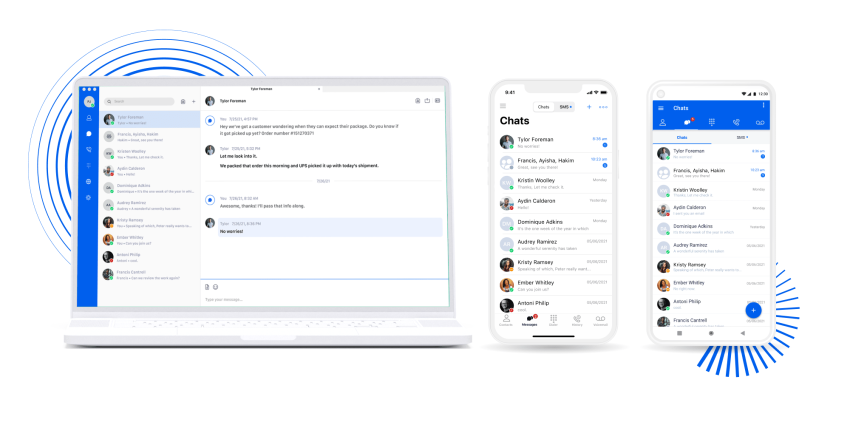
Key Providers: Nextiva, RingCentral, 8×8, Dialpad
4) Interactive Voice Response (IVR) for AI-Powered Customer Self-Service
When call volumes surge, a smart interactive voice response (IVR) system is your first line of defense. Far from the frustrating and rigid menus of the past, conversational IVRs use natural language processing (NLP) to understand a caller’s intent in their own words.
Think of it as your automated frontline defense. The system can securely authenticate users, provide automated answers, freeing up your human talent to handle high-value, complex problem-solving.
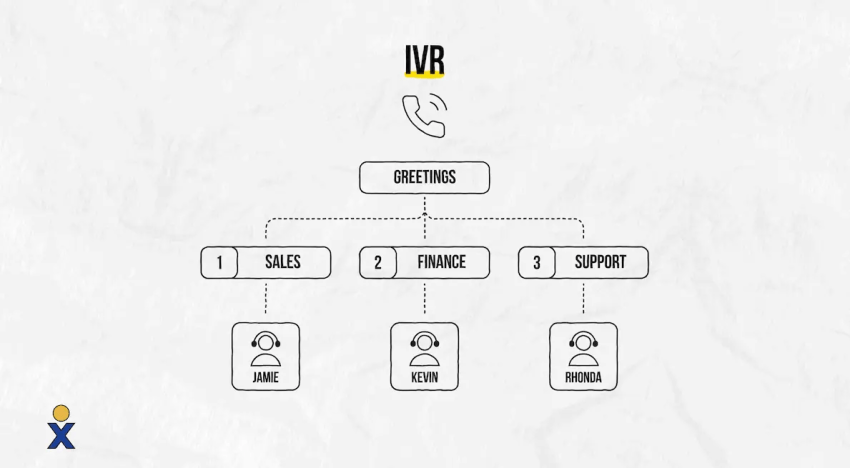
Key Providers: Genesys, Nuance, Amazon Connect, Nextiva
5) Automatic Call Distribution (ACD) for Skills-Based Intelligent Routing
Automatic call distribution (ACD) is the brain of your call routing strategy. While an IVR gathers intent, the ACD executes the routing, matching customers with the best-suited agent based on predefined rules.
Skills-based routing can direct a technical query to a certified specialist or a sales call to a top-performing closer. It can also identify high-value customers from your CRM and move them to a priority queue, ensuring your most important clients always receive prompt service. The result is an increase in first-call resolution and a more balanced workload across your team.
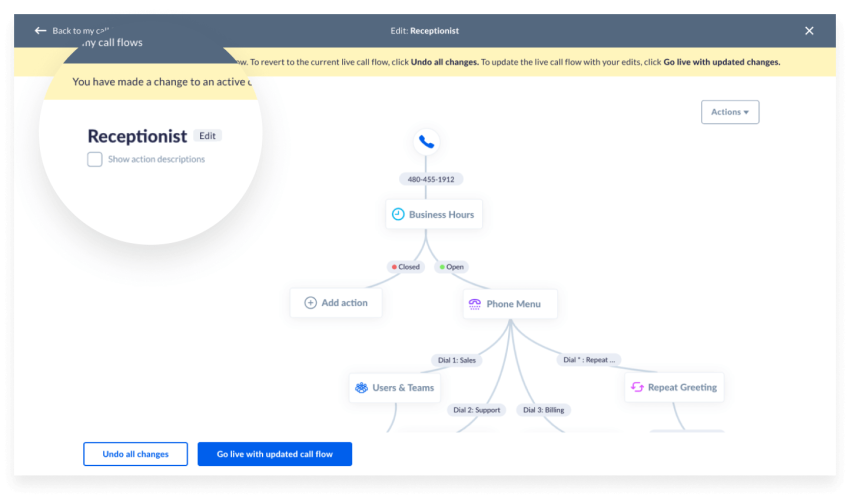
Key Providers: Five9, Talkdesk, Avaya, Nextiva
6) Call Scripting for AI-Powered Conversation Guidance
A great call script doesn’t create robotic agents but gives them confidence and consistency. Call scripting tools offer dynamic, AI-powered conversation guidance that adapts in real-time to the customer’s needs.
Instead of a static, word-for-word customer service script, these tools offer branching conversation flows and integrate with your knowledge base to surface the right information at the right moment. It’s easy to train new agents, ensure regulatory compliance in sensitive industries like finance and healthcare, and guide agents through complex troubleshooting scenarios.

Key Providers: Balto, Salesforce Einstein, Oracle Service Cloud, Zendesk Guide
Evaluating contact centers? Get the buyer’s guide.
This guide reveals the five pillars of a modern platform, key questions to ask, and red flags to avoid.
7) Call Recording for Quality Assurance and Compliance
Quality assurance is key in a customer-facing role. Call recording provides the foundation needed for effective training, compliance verification, and dispute resolution. Call center platforms automatically record and transcribe all conversations, storing them in a secure, searchable archive. However, the power lies in the analytics.
Call recording tools with integrated emotion and sentiment analysis can automatically flag phone calls where a customer is upset, while keyword detection can monitor for compliance adherence or mentions of a competitor. Quality management and analytics tools turn recording from a passive storage tool into a platform for quality improvement.

Key Providers: Nextiva, Verint, CallMiner, NICE
8) Call Queue for Intelligent Wait Time Management
No one likes being on hold, but effective queue management can make the experience tolerable, and even productive. Instead of sending callers to a frustrating busy signal or voicemail, a call queue places them in a virtual line and provides dynamic wait time estimates.
The best call center for startups offer a callback option, freeing the customer to go about their day until an agent is ready. This hold time can also be used to share valuable brand messaging or promotional offers, turning a negative into a positive engagement that reduces call abandonment.

Key Providers: Most call center platforms like Nextiva, Talkdesk, and Genesys offer this as a standard feature, with advanced analytics available in higher tiers.
9) Predictive Dialer for Smart Dialing
For any team focused on outbound campaigns — whether for sales, lead generation, or customer support — a predictive dialer is a massive productivity multiplier. Predictive dialers use an AI algorithm to dial multiple phone numbers simultaneously, filtering out busy signals, voicemails, and dropped lines. An agent is only connected when a person answers the call.
According to InsideSales, outbound call centers can increase agent talk time from 15 minutes per hour to 48 minutes per hour. To ensure compliance with regulations like the TCPA, top-notch dialers also offer features like time zone detection and automatic scrubbing against DNC lists.

Key Providers: Five9, Genesys, Aspect, NICE
10) Dashboards and Call Analytics for Real-Time Performance Intelligence
You cannot improve what you cannot measure. Call analytics provides customizable dashboards with real-time insights into crucial call center metrics like call volume, average handle time, and first-call resolution. Beyond real-time monitoring, predictive analytics can help with strategic planning by forecasting future call volumes and staffing needs.
By drilling down into team and individual agent performance, managers can identify bottlenecks, spot coaching opportunities, and make informed decisions that optimize the entire operation.
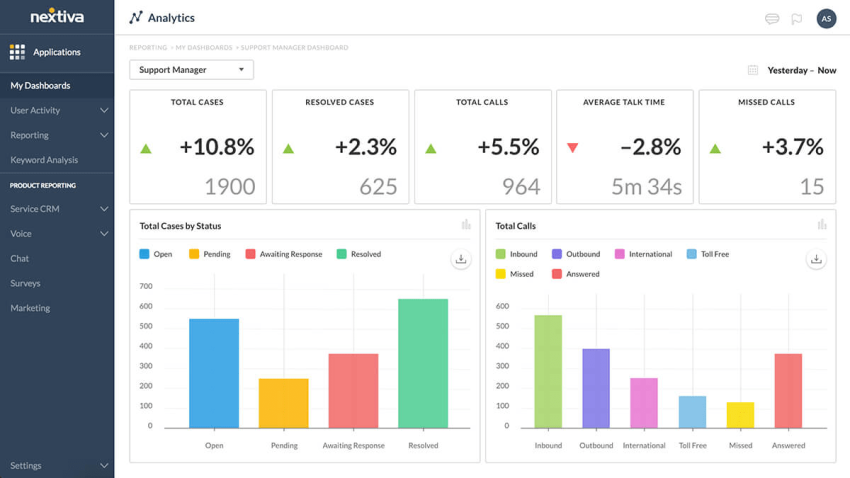
Key Providers: Nextiva, Tableau, Microsoft Power BI, Calabrio
11) Wallboards for Gamified Performance Displays
While dashboards are for deep analysis, wallboards are for immediate motivation. These large, publicly displayed screens distill your most important real-time KPIs — like calls in queue, team sales targets, or CSAT scores — into a highly visible format.
Incorporating gamification elements like leaderboards and achievement badges, wallboards tap into the innate human desire to compete and succeed. This creates a sense of transparency and shared purpose, keeping the team aligned on key goals and celebrating wins together in real-time and increasing call center productivity.
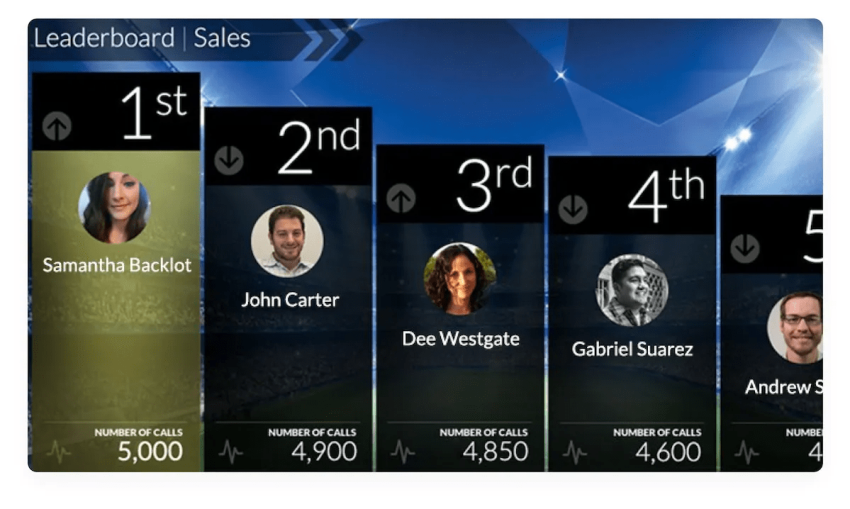
Key Providers: Most analytics providers offer wallboard functionality. Specialized vendors include Geckoboard and Plecto.
12) Customer Satisfaction Surveys for Automated Feedback Collection
The most direct way to measure the customer experience is simply to ask. Contact centers can automate collecting feedback by sending a CSAT survey via email or SMS the moment an interaction ends.
You’ll get a constant stream of qualitative and quantitative data on everything from agent friendliness to product knowledge. Real-time alerts can immediately notify a manager of negative feedback, enabling swift service recovery to turn a poor experience into a positive one and prevent customer churn.
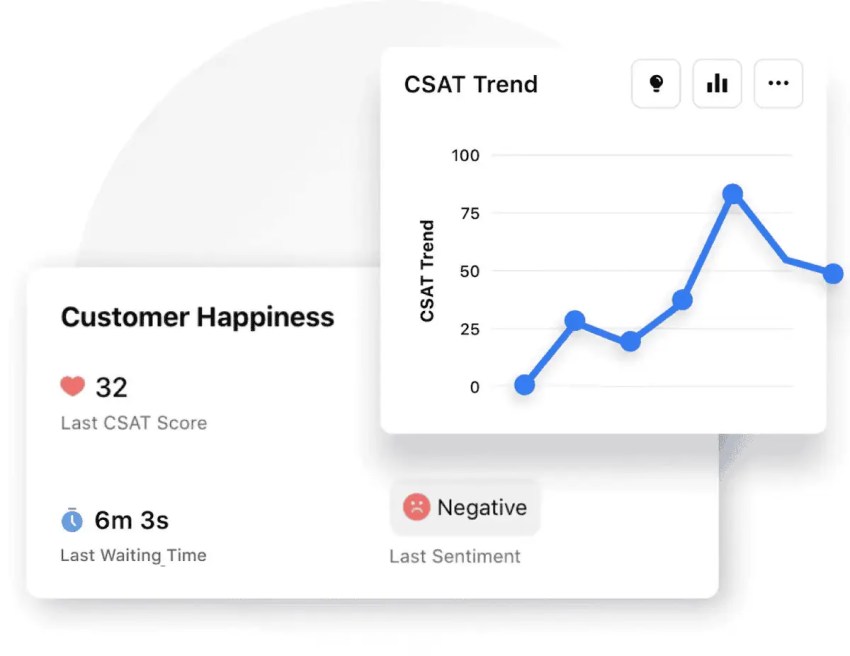
Key Providers: SurveyMonkey, Qualtrics, and integrated tools within platforms like Nextiva and Delighted.
13) Workforce Management (WFM) for Scheduling and Forecasting
Having the right number of skilled agents available at the right time is one of the most complex challenges in a call center. WFM tools solve this with AI-powered forecasting to accurately predict call volumes.
Based on these forecasts, WFM platforms generate optimized schedules that account for agent skills, shift preferences, workflows, and break times. According to a Forrester study, businesses using cloud WFM tools can reduce overtime costs by up to 20%. Furthermore, by providing agents with self-service tools for tasks like shift swapping, WFM solutions can lead to a 20-30% increase in productivity and engagement (McKinsey).

Key Providers: Calabrio, NICE, Verint, Assembled
Ready to see the impact of WFM tools on your bottom line?
Nextiva’s WFM calculator can help you see how much you can save with a modern WFM solution.
14) AI and Automation for Next-Gen Customer Experience
Artificial intelligence and automation are all the rage now in the contact center space, and for good. The global call center AI market was valued at $3.23 billion in 2024 and is expected to reach approximately $25.84 billion by 2034. AI technologies automate routine inquiries and offer real-time transcription summaries with sophisticated conversational AI and virtual agents, freeing human agents to not only focus on high-quality interactions, but build them from scratch.
Beyond chatbots, real-time agent assist tools listen to conversations and provide in-the-moment coaching and compliance alerts. Speech analytics can automatically score 100% of customer calls for quality assurance, a task that is impossible to do manually.
The ROI is clear: Businesses that deploy Agentic AI (AI that acts as a partner, not just a tool) see a 14% increase in agent productivity. This goes beyond chatbots; we are talking about AI that can listen to a live call, fetch the exact warranty info the agent needs, and even process the refund in the background without the agent lifting a finger.
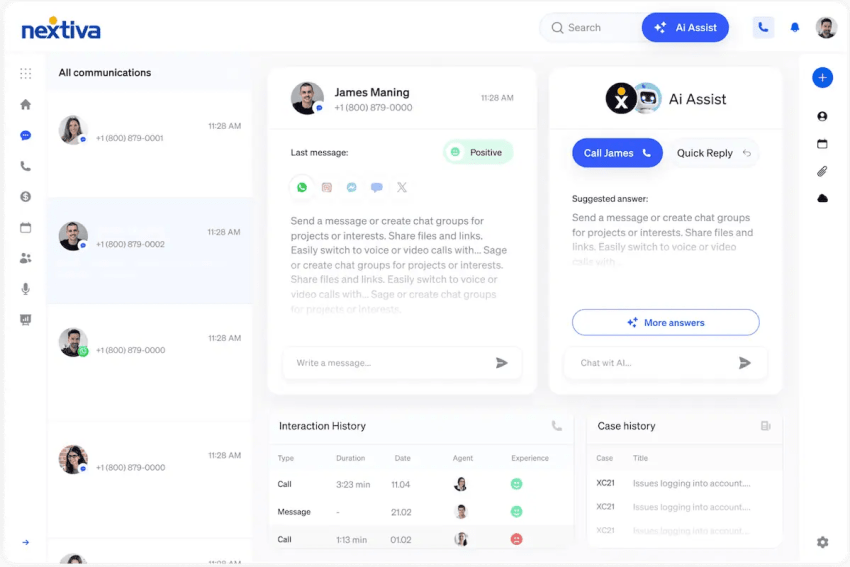
Key Providers: (Integrated Platforms) Nextiva, Five9, (Conversational AI) LivePerson, Google Dialogflow; (Agent Assist) Cogito, Observe.AI; (Speech Analytics) CallMiner, Verint
There are times when you want to proactively alert customers and let them know you’ve identified something on their behalf. By understanding the customer’s profile, preferences, intents, and needs, you can use AI and automation to enhance the human experience across digital channels.
Kate, Nextiva’s Senior Director of Product Marketing.
Where does your CX strategy stand with AI?
Take the AI Maturity assessment to get personalized recommendations on how to enhance your CX.
15) Compliance and Security Tools for Advanced Security and Fraud Prevention
With the average cost of a data breach now exceeding $4.8 million globally, security is a business necessity. Call centers handling sensitive data must adhere to strict regulations like PCI DSS for payments and HIPAA for healthcare.
Call center security tools are built directly into the contact center solution to mitigate these risks. They provide real-time fraud detection using voice biometrics, automatically pause call recordings when payment information is shared, and create detailed audit trails to ensure compliance. Investing in a secure, compliant platform is critical for protecting your customers, your reputation, and your bottom line.

Key Providers: Solutions are typically integrated within secure CCaaS platforms like Nextiva, Genesys, and NICE CXone, which maintain PCI and HIPAA certifications.
What’s the Future of Call Center Tools?
While the tools above define the modern call center, technology is changing constantly. The next wave of innovation will move beyond simply responding to customer needs and creating predictive, immersive, and highly personalized experiences. Here are three key trends to watch.
1) The shift from repair to proactive care
The traditional service model is reactive. which waits for the customer to complain. The future is proactive support with enhanced service quality. Imagine an internet provider’s router detecting a signal drop and automatically scheduling a technician visit before the customer even realizes their Netflix has stopped buffering. This bidirectional support model flips the paradigm, eliminating customer effort.
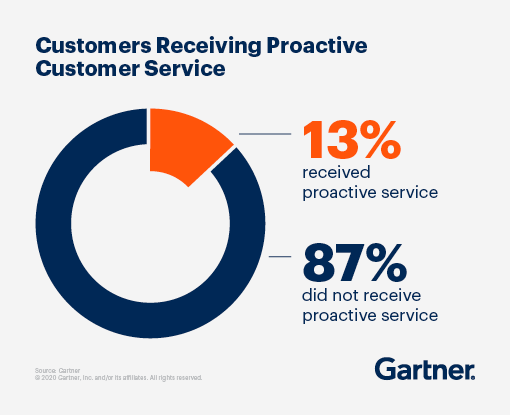
Source: Gartner
2) The rise of Agentic AI
AI will evolve from a passive assistant to an active partner. As defined by recent Gartner trends, Agentic AI doesn’t just suggest answers — it performs tasks. For example, while an agent builds rapport with a frustrated customer, the AI is simultaneously checking inventory, generating a return label, and emailing it to the customer in the background.
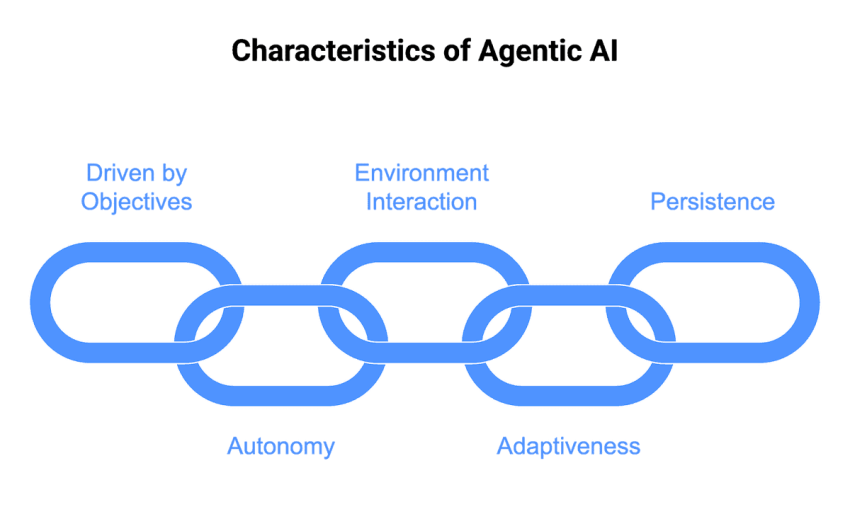
3) See what I see support (augmented reality)
For problems with physical products, augmented reality (AR) will improve troubleshooting. Instead of describing a problem over the phone, a customer can use their smartphone camera to show the agent exactly what they see.
The agent can then use AR to draw circles and arrows directly on the customer’s smartphone screen. For example, highlighting exactly which cable to unplug. This technology is already showing impressive results: Reducing truck rolls (expensive technician visits) by up to 30%.
Quick Call Center Tools List To Build Your 2026 Tech Stack
Not every team needs every tool on day one. Here’s a checklist to help you identify which call center tools you need based on your current growth stage.
| Growth stage | Starter team | Growing department | Enterprise/contact center |
| Focus | Simplicity & connectivity | Efficiency & Routing | AI, Automation & Optimization |
| Nextiva plan | Core | Engage | Power Suite CX |
| Essential tools | Desktop softphone Mobile app CRM integration (Basic) Call recording | All starter tools Interactive voice response (IVR) Auto call distribution (ACD) Call queuing Call monitoring Wallboards | All growth tools Omnichannel helpdesk Workforce management (WFM) Agentic AI & automation Sentiment analysis Predictive dialer |
Nextiva Gives You the Call Center Tools and Features You Need
At the end of the day, the right call center tools are the ones that empower your agents to succeed and make your customers feel valued. As you evaluate your options, focus on the outcomes you want to achieve:
- Reduce after-call work through intelligent automation.
- Create more personal connections by arming agents with full customer context.
- Increase customer understanding with deep analytics and AI-driven insights.
- Reduce indecision by providing agents with real-time guidance.
Nextiva’s call center software solution has the tools and features your agents need to be more productive and more successful in their roles. Meanwhile, your customers will be at peace knowing their questions will be answered quickly and efficiently, regardless of how many calls are coming in. If call center performance slips, you’ll have reporting and analytics tools by your side to see where the bottlenecks in your call center are.
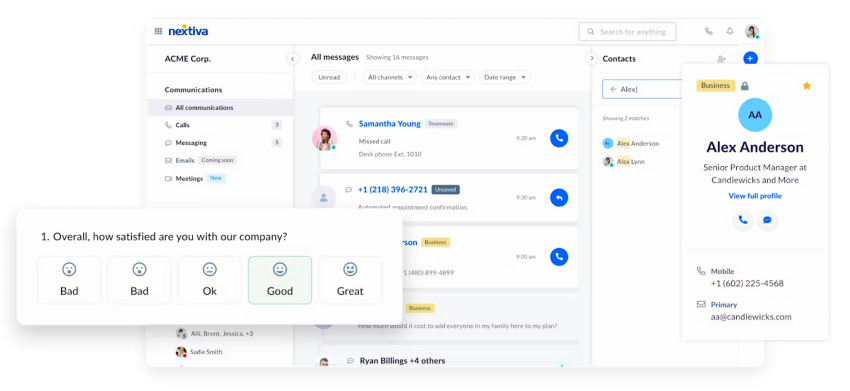
A call center solution with this level of flexibility and functionality leads to more satisfied employees and customers.
A modern call center teams love.
Sales and support teams use Nextiva to deliver a better customer experience.
Frequently Asked Questions About Call Center Tools
Yes, but with significant caveats. Providers like Freshcaller and Bitrix24 offer freemium plans, but they are rarely 100% free.
The catch: Most free plans charge per minute for calls, lack essential features like call recording or IVR, and offer no live customer support.
Best for: Very small startups testing a concept.
The risk: For a growing business, the hidden costs of per-minute billing exceed the price of a flat-rate professional plan like Nextiva, which includes unlimited calling and reliability.
You do not need expensive on-premise hardware or server rooms. To start a cloud-based call center, you simply need:
High-speed internet (crucial for VoIP quality).
Computers or laptops for your agents.
Noise-canceling headsets for audio clarity.
Call center software (CCaaS) like Nextiva to manage the routing and numbers.
Most call centers use a tech stack of three core technologies:
CCaaS (Contact Center as a Service): The phone system and digital communication channels (e.g., Nextiva, Five9).
CRM (Customer relationship management): The database of customer history (e.g., Salesforce, HubSpot).
WFM (Workforce management): The scheduling tool to manage shifts (e.g., Calabrio).
CRM stores customer information (who the customers are, what they’ve bought), while the call center software manages the communication (call routing, audio recording). You’ll get the best results when both systems are integrated, so the voice (call center) can instantly access the memory (CRM).
Most leading contact center platforms are built with integration in mind. They offer pre-built integrations with popular CRM systems and helpdesk software (like Salesforce, HubSpot, and Zendesk) and provide open APIs for custom connections to your proprietary business tools.
Not necessarily. Cloud-based solutions (CCaaS) are user-friendly and vendor-managed. This eliminates the need for on-site hardware and dedicated IT staff for maintenance and updates, making call center tools accessible to small and medium-sized businesses.
Cloud-based platforms offer rapid deployment. A basic setup for a small team can be live in less than 24 hours. Complex enterprise deployments with custom CRM integrations and AI automation typically take a few weeks to fully configure and test.

















 VoIP
VoIP 







